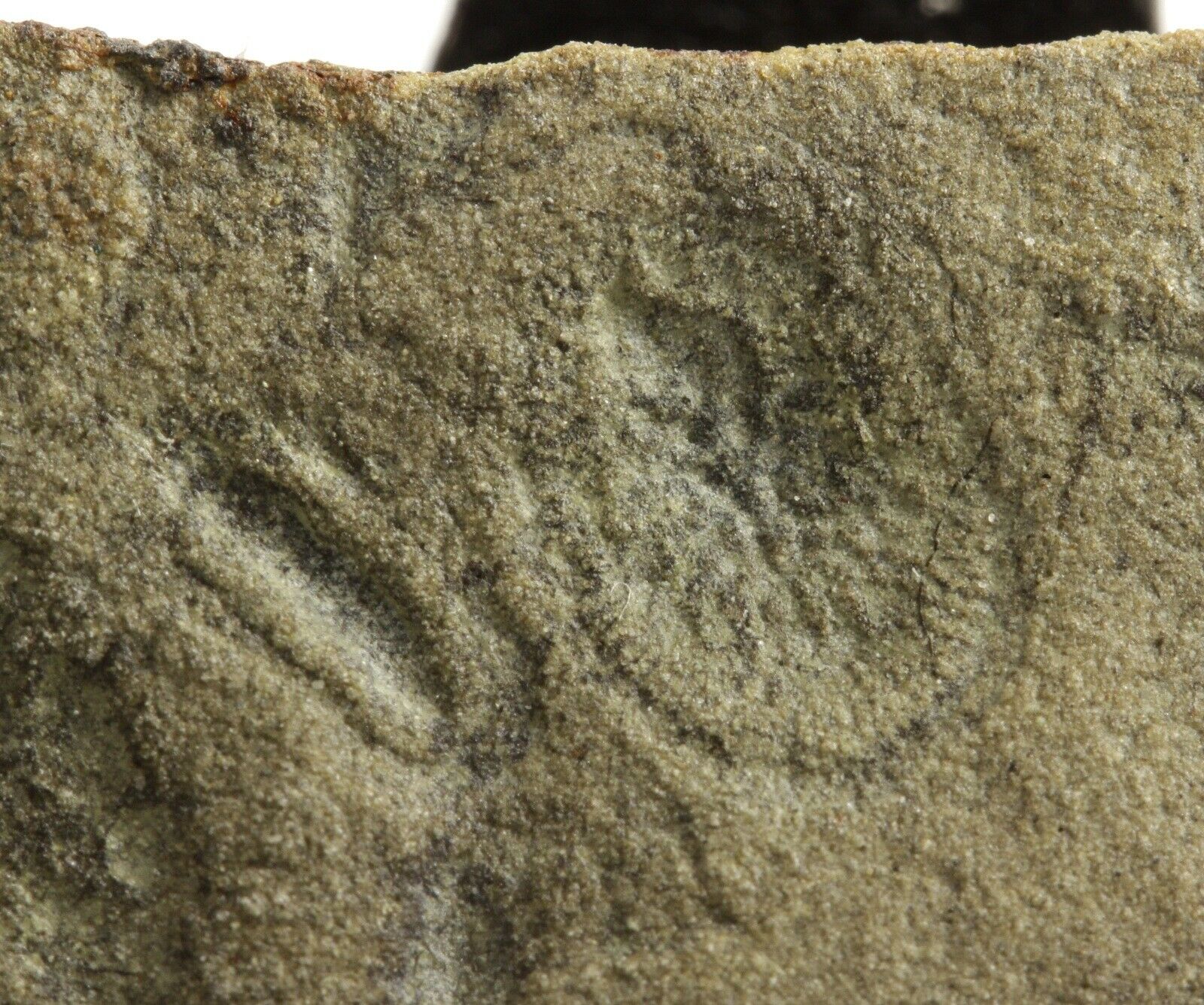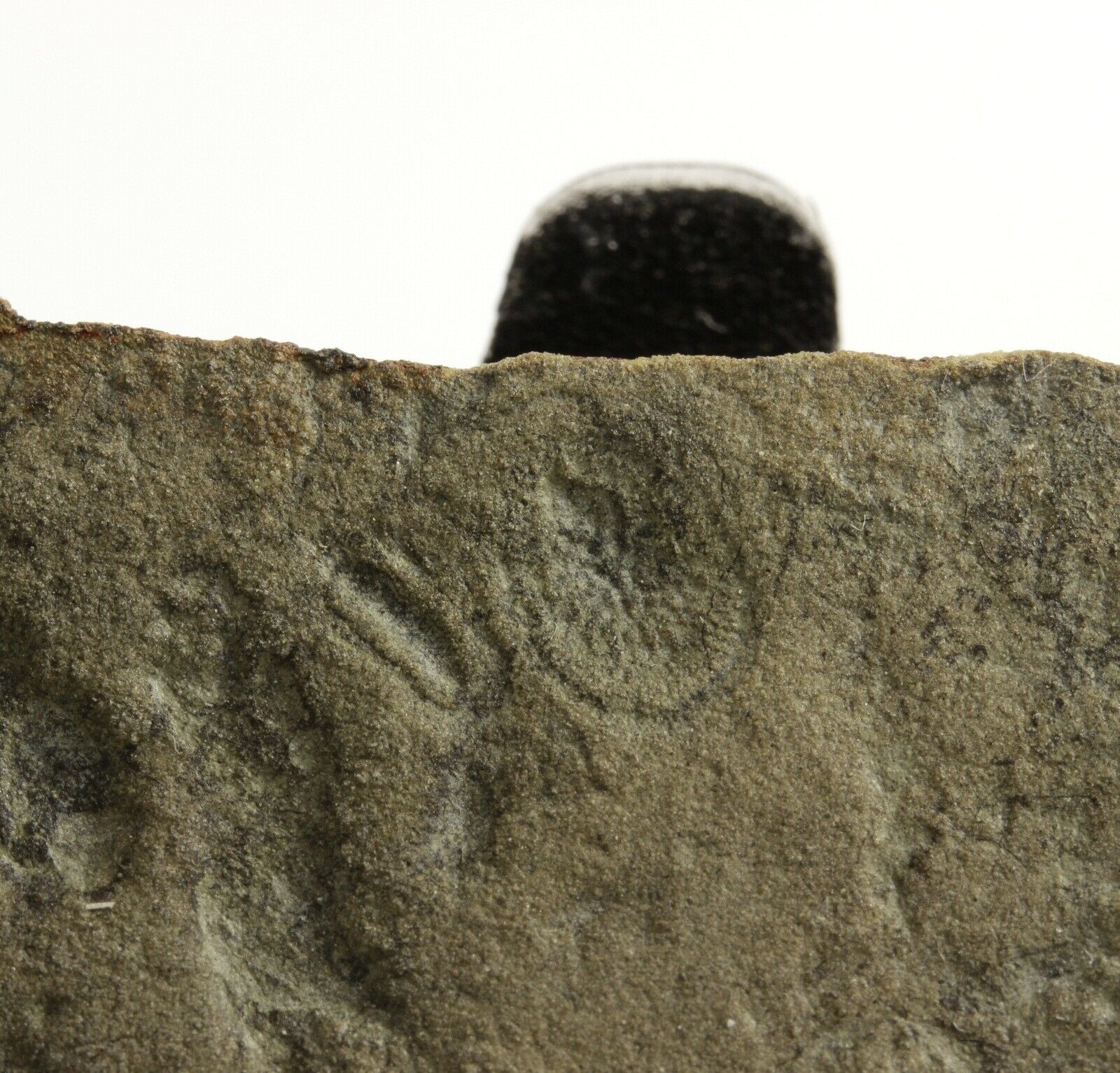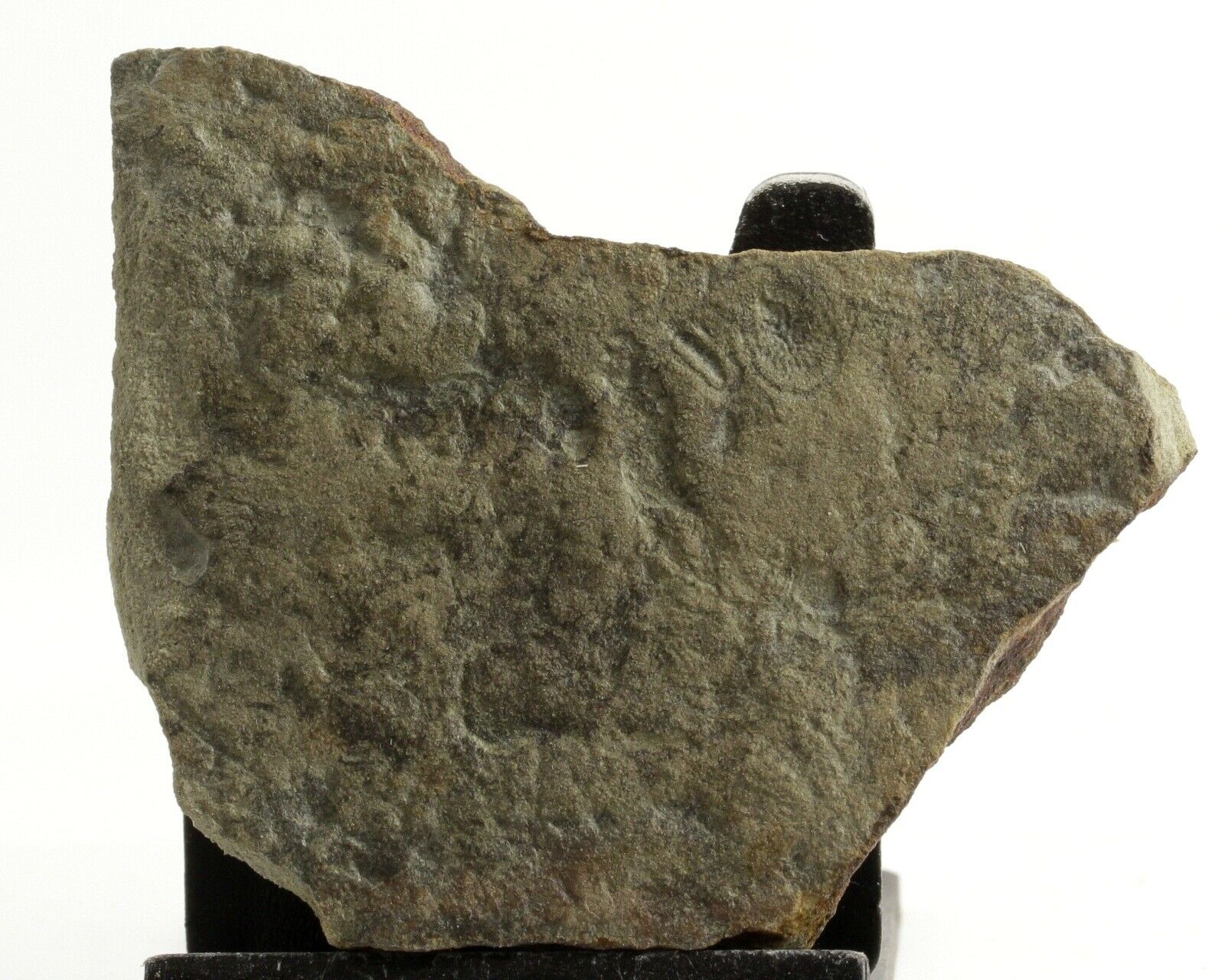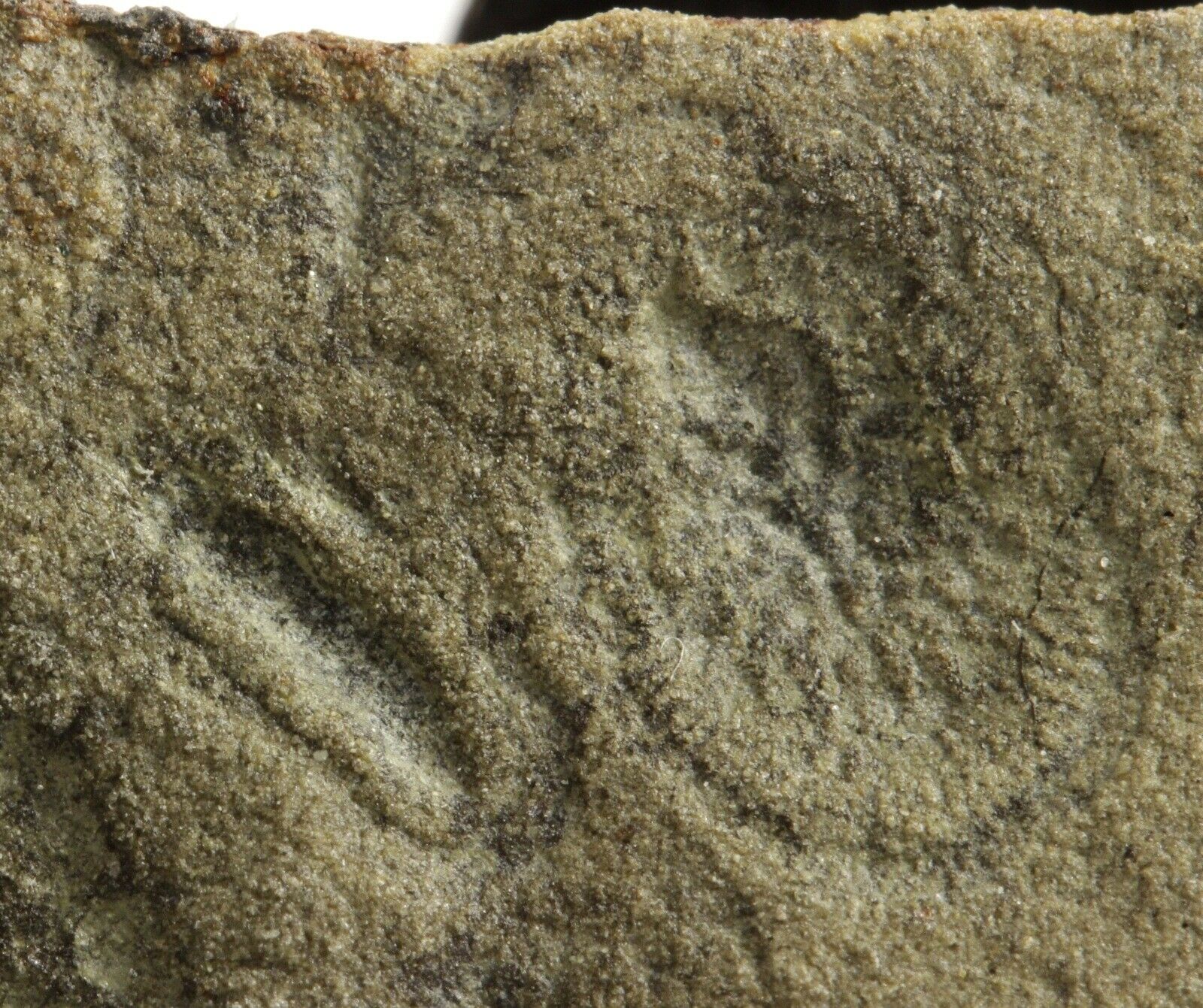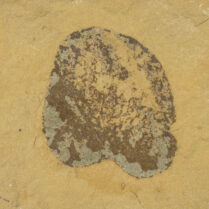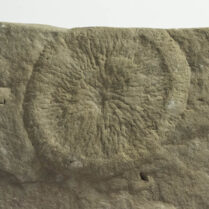Description
Solza margarita (Ivantsov, 2004) and Kimberella quadrata
Precambrian Penega Formation
East Angelsk, White Sea, Russia.
7mm Solza and 6mm Kimberella on 65mm slab. Extremely rare. See: Ivantsov, A.Y.; Malakhovskaya, Y.E.; Serezhnikova, E.A. (2004). “Some Problematic Fossils from the Vendian of the Southeastern White Sea Region” Paleontological Journal. 38 (1): 1–9.
Ediacaran. Soft-Bodied, Problematica.
Solza is a genus of early animal that hasn’t been assigned to a particular family, order, class, nor phylum. It’s sort of a lengthwise, half-ovoid shape like a Reese’s peanut butter egg sold before Easter. It was bilaterally-symmetrical and mobile. So far, it’s known only from Vendian-age White Sea localities in Russia.
Kimberella is a genus of early, bilaterally-symmetrical animal originally described from the Ediacara Hills, southern Australia as a jellyfish. It was later reinterpreted as a box jelly. Since then, numerous well-preserved specimens from the White Sea, northern Russia have led researchers to conclude that may be more closely-related to molluscs (something like a primitive slug).

